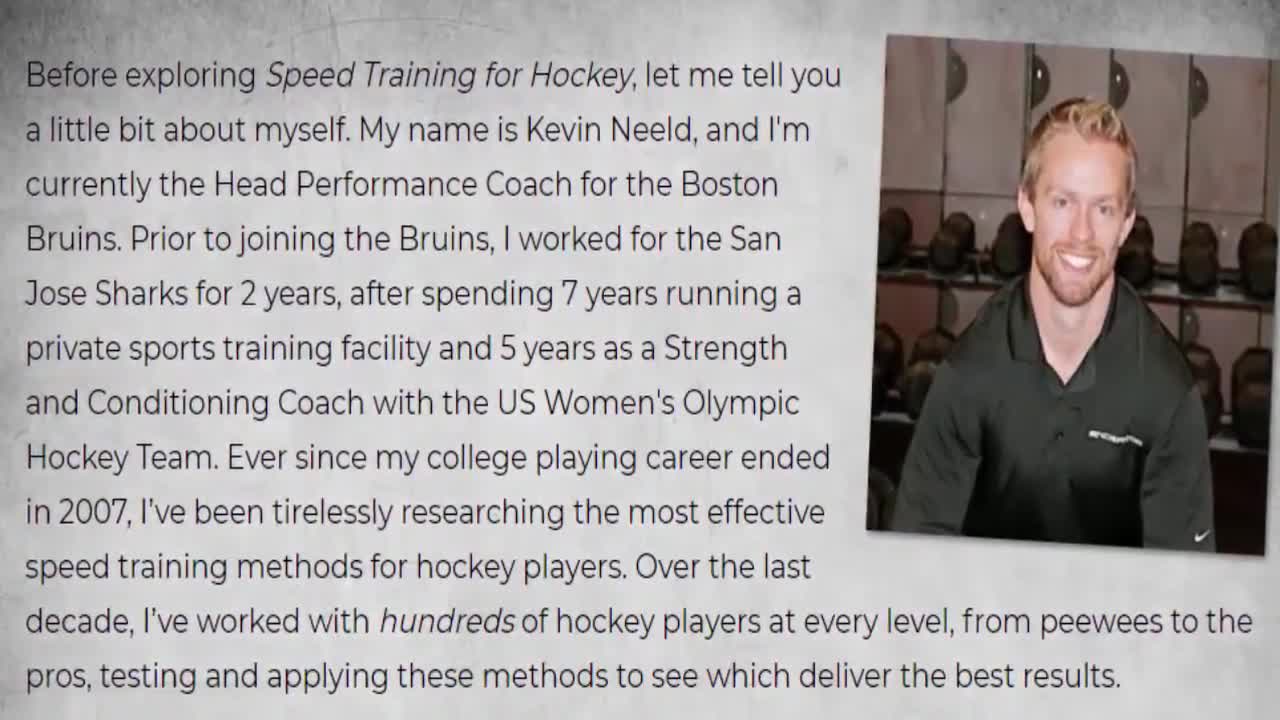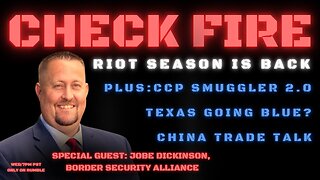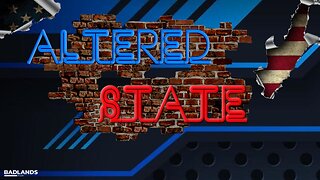Premium Only Content

Speed Training for Hockey
Attention hockey players, parents, and coaches:
Now more than ever before, the game of hockey is dominated by explosive speed.
At every level, it’s the fastest players who win races to loose pucks, create the time and space needed to get quality shots off, and ultimately create the most opportunities. In a game where a fraction of a second can mean the difference between winning and losing, speed separates the elite players from the average ones.
Clearly, hockey players must seize every opportunity to improve their speed. The trouble is, there’s a widespread misunderstanding of how to best train for speed.
Much of the available information on speed training for hockey is either outdated, overly scientific, impractical, or flat out ineffective.
Many players continue to spend valuable training time on “quick feet” drills with cones and ladders, as well as other speed drills they typically lift from a track and field or football training program.
This so-called “speed work” is often supplemented with old school bodybuilding or powerlifting routines in the weight room, or worse, no strength training at all.
Unfortunately, these common off-ice training practices have little bearing on skating and on-ice performance. Skating is a unique motion that has several very notable differences compared to running. Understanding these differences, as well as considering the impact of the rapid accelerations, decelerations, and direction changes required in hockey are all incredibly important when designing a training program that will transfer to on-ice improvements.
In addition to the lack of awareness regarding hockey-specific speed training, many players will also perform their speed work in a way that actually makes them slower.
Speed development requires a specific amount of intensity to make a change. If this intensity cannot be maintained for any reason (e.g. insufficient rest between reps, poor recovery between days, etc.) the training becomes "conditioning" at best, and useless stress at worst. In either case, the player exerts a lot of energy, but doesn't get faster, and may expose themselves to an increased risk of injury in the process.
Playing hockey today requires a significant and constantly growing time commitment. Players have more games and travel than ever before, and more "competing demands" for training time. With this in mind, it is essential that players make the best use of their limited training time by following a training program that cuts out the fluff, and only includes proven, effective methods.
This is exactly why I wrote Speed Training for Hockey.
12 weeks to changing your game Speed Training for Hockey instant access now: 👉 ► https://bit.ly/3uha7p1
#hockey #nhl #football #sports #icehockey #hockeylife #baseball #playoffs #hockeyplayer #hockeyplayers #nhlplayoffs #hockeyislife #hockeygame #hockeystick #hockeyfan #speedtrainingforhockey
(Note: This video content is for reference only, we do not recommend or force anyone to follow any action like in the video. In any case, we are not responsible for you for any damages related direct or indirect to any information in the video. Thank you!
-
 LIVE
LIVE
I_Came_With_Fire_Podcast
14 hours agoRIOT SEASON IS BACK! | CCP Smuggler 2.0 | Texas Going Blue? | China Trade Talk
575 watching -
 1:00:41
1:00:41
Omar Elattar
6 hours ago“I Was Homeless On NYC Streets!” - Tequila CEO Shares Her Multi-Million Dollar Story
55.3K4 -
 1:51:20
1:51:20
The Pascal Show
3 hours ago $1.76 earnedRIOTS NATIONWIDE?! Anti-ICE Protests Throughout The Country! LA, NYC & More Absolute Chaos!
36.1K2 -
 27:54
27:54
Stephen Gardner
8 hours ago🔥RFK Jr. makes SHOCKING ANNOUNCEMENT!
69.5K33 -
 1:31:42
1:31:42
Badlands Media
1 day agoAltered State S3 Ep. 32: Project Cyberspace, Deep State Games & the War for Perception
76.2K1 -
 LIVE
LIVE
svgames
4 hours ago🟢LIVE - SOUTH OF MIDNIGHT
111 watching -
 11:02
11:02
ARFCOM News
10 hours ago $1.45 earnedATF Goes After Pin & Weld Barrels | The FBI Caught Some Actual Nazis | Cop Shoots Tiny Puppy
21.5K11 -
 LIVE
LIVE
KingB33Gaming
10 hours agoThe Wind Waker | Nintendo Switch 2 Gamecube Virtual Console
87 watching -
 44:19
44:19
CarlCrusher
5 hours agoBombshell UFO News Immaculate Constellation REAL & Dr Hal Puthoff Appears on Joe Rogan
28.3K5 -
 LIVE
LIVE
Rhino6888
7 hours agoGTA STORY MODE, COME CHAT, DROP A FOLLOW!
88 watching